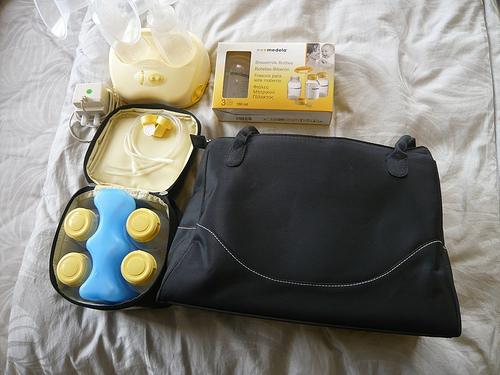Use Electronic Breast Pumps to Increase Breastmilk
A breastpump can be beneficial for nursing mothers in many ways. By breast pumping and using breastmilk storage, you can continue to breastfeed your baby even when you are separated during the work day or for other commitments. Additionally, breast pumping allows another person to feed your baby during the night or at other times to give you a much needed rest.

- How to Keep Breastfeeding When You Go Back to Work
If you're headed back to work and wondering if you should continue to breastfeed the answer is yes. Most work schedules can be combined with breastfeeding. You may just have to get a little creative! There are... - The Gradual Wean: How to Stop Breastfeeding
Forget what everybody tells you, you're really the only one who knows when to stop breastfeeding. Stopping breastfeeding is a personal decision, nobody else's business but you and your baby's. If you need to...
One important advantage to breast pumping is that the process can actually increase your production of breastmilk. Using a breast pump will stimulate your breast producing hormones and allow you to produce more milk.
How often should you use a breast pump?
The key to increasing your breastmilk through pumping is to consistently stimulate the breast through pumping in order to produce more breast milk. If you do not regularly stimulate your breast through pumping or breast feeding, your breasts will not produce as much milk. In order to maximize the amount of breast milk produced, pump each of your breasts for at least 5 minutes every 2 or 3 hours.
Spending long periods of time breast pumping is not necessary, as it does not result in more breast milk production. This practice may also make your breasts sore or tender. Instead, pump for short sessions only, for about 5 to 10 minutes. Start off by using the breast pump only a couple of times throughout the day and gradually increase the frequency with which you pump to once every 2 to 3 hours. Your body’s hormones that trigger milk production will increase through an increased number of pumping sessions. Even if the amount of breastmilk you produce in one session decreases when you use your breast pump more often, your hormones will be consistently stimulated and will produce more breast milk in the long run.
Why you should consider an electric pump
There are several types of breast pumps available, and some women even pump by hand. Most breast pumps are classified as either electric or manual. Manual pumps use the strength of a mother’s arm and hand to pump manually. While this method may work for women who pump only occasionally, it can be a physically strenuous venture for working mothers using the pump every 2 or 3 hours. Electric breast pumps offer an easier alternative. They plug into an AC adapter or an electrical outlet and pump with efficiency and ease. Use of an electric pump can help you greatly increase the breast milk available for your baby.






